Leather has been a popular material for shoes for centuries, loved for its durability, suppleness, and unique aesthetic. However, with growing environmental consciousness and evolving technology, faux leather has emerged as a viable alternative to real leather in the footwear industry. This has sparked a debate among consumers about which is the better choice when it comes to purchasing shoes – faux leather or real leather? When considering buying shoes, the choice between faux leather and real leather often comes down to personal preference, budget, and ethical considerations. To help you make an informed decision, let’s explore the characteristics, benefits, and drawbacks of both faux and real leather shoes. Faux leather, also known as synthetic leather or vegan leather, is a man-made material designed to mimic the look and feel of real leather without using animal products. It is typically made from polyurethane (PU) or polyvinyl chloride (PVC) and can be produced in a variety of textures and finishes that closely resemble genuine leather. One of the key advantages of faux leather shoes is that they are usually more affordable than real leather shoes, making them an appealing option for budget-conscious consumers. In addition to being cost-effective, faux leather shoes are also considered more sustainable and environmentally friendly than real leather shoes. The production of faux leather requires less water and energy compared to real leather, and it does not involve the use of animal hides, which contributes to reducing the demand for animal products in the fashion industry. For individuals who are vegan or have ethical concerns about using animal-derived materials, faux leather provides a cruelty-free alternative without compromising on style or quality. Furthermore, faux leather shoes are generally easier to clean and maintain than real leather shoes. They are more resistant to stains, water, and fading, which means they can retain their appearance for a longer period with minimal upkeep. This makes faux leather shoes a practical choice for everyday wear, especially in environments where shoes are exposed to dirt, moisture, or harsh weather conditions. On the other hand, real leather shoes are prized for their luxurious look, rich texture, and exceptional quality. Genuine leather is a natural material that is breathable, flexible, and durable, making it highly desirable for footwear that needs to withstand frequent use and last for years. The unique grain patterns, softness, and aging characteristics of real leather contribute to the charm and elegance of leather shoes, creating a timeless appeal that cannot be replicated by faux leather. Moreover, real leather shoes have a distinct smell and feel that many people find appealing and comforting.

.
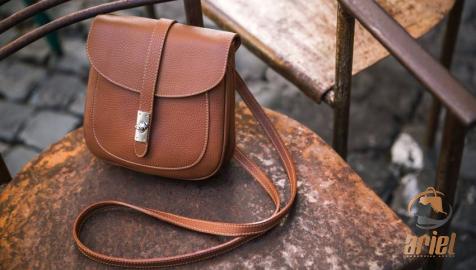 The tactile experience of touching soft, supple leather and inhaling its natural scent can evoke a sense of luxury and craftsmanship that is synonymous with high-quality footwear. For individuals who appreciate the tradition and heritage of leather craftsmanship, real leather shoes hold a special allure that transcends trends and fast fashion. In terms of comfort and fit, real leather shoes have the advantage of molding to the shape of the foot over time, providing a personalized and snug fit that enhances comfort and support. Leather is a breathable material that allows air circulation around the feet, helping to regulate temperature and reduce sweat and odor. This makes real leather shoes a popular choice for people with sensitive skin or foot conditions that require comfortable and well-fitted footwear. When it comes to durability and longevity, real leather shoes are known for their resilience and ability to age gracefully with proper care. High-quality leather shoes can withstand wear and tear, developing a unique patina and character that tell the story of their journey with the wearer. With regular maintenance and occasional conditioning, real leather shoes can be preserved for years, gaining value and sentimental significance as they age. In summary, the choice between faux leather and real leather shoes ultimately depends on your personal preferences, values, and lifestyle needs. If you prioritize affordability, sustainability, and versatility, faux leather shoes may be the ideal option for you. On the other hand, if you appreciate craftsmanship, luxury, and long-term investment, real leather shoes may be more suited to your tastes. Ultimately, whether you choose faux leather or real leather shoes, what matters most is that you feel comfortable, stylish, and confident in your footwear. Both materials have their own unique merits and can complement different fashion choices and occasions, so it’s important to consider the factors that are most important to you when making a decision about which type of shoes to purchase. In conclusion, the debate between faux leather and real leather shoes is an ongoing conversation that reflects changing consumer preferences, ethical considerations, and environmental awareness in the fashion industry. As you navigate the world of shoe shopping, remember to weigh the benefits and drawbacks of each material, try on different styles to see how they fit and feel, and choose shoes that resonate with your personal style and values. Whether you opt for the timeless elegance of real leather or the modern versatility of faux leather, what matters most is that you find shoes that make you look and feel great every step of the way.
The tactile experience of touching soft, supple leather and inhaling its natural scent can evoke a sense of luxury and craftsmanship that is synonymous with high-quality footwear. For individuals who appreciate the tradition and heritage of leather craftsmanship, real leather shoes hold a special allure that transcends trends and fast fashion. In terms of comfort and fit, real leather shoes have the advantage of molding to the shape of the foot over time, providing a personalized and snug fit that enhances comfort and support. Leather is a breathable material that allows air circulation around the feet, helping to regulate temperature and reduce sweat and odor. This makes real leather shoes a popular choice for people with sensitive skin or foot conditions that require comfortable and well-fitted footwear. When it comes to durability and longevity, real leather shoes are known for their resilience and ability to age gracefully with proper care. High-quality leather shoes can withstand wear and tear, developing a unique patina and character that tell the story of their journey with the wearer. With regular maintenance and occasional conditioning, real leather shoes can be preserved for years, gaining value and sentimental significance as they age. In summary, the choice between faux leather and real leather shoes ultimately depends on your personal preferences, values, and lifestyle needs. If you prioritize affordability, sustainability, and versatility, faux leather shoes may be the ideal option for you. On the other hand, if you appreciate craftsmanship, luxury, and long-term investment, real leather shoes may be more suited to your tastes. Ultimately, whether you choose faux leather or real leather shoes, what matters most is that you feel comfortable, stylish, and confident in your footwear. Both materials have their own unique merits and can complement different fashion choices and occasions, so it’s important to consider the factors that are most important to you when making a decision about which type of shoes to purchase. In conclusion, the debate between faux leather and real leather shoes is an ongoing conversation that reflects changing consumer preferences, ethical considerations, and environmental awareness in the fashion industry. As you navigate the world of shoe shopping, remember to weigh the benefits and drawbacks of each material, try on different styles to see how they fit and feel, and choose shoes that resonate with your personal style and values. Whether you opt for the timeless elegance of real leather or the modern versatility of faux leather, what matters most is that you find shoes that make you look and feel great every step of the way.
..
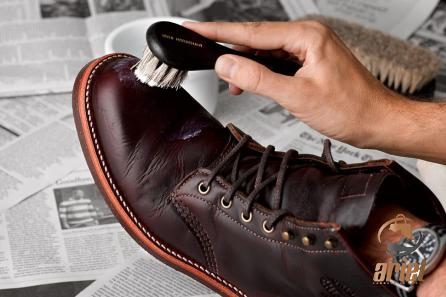 In the world of fashion, the debate between faux leather and real leather shoes extends beyond just material considerations. It also delves into the broader topics of sustainability, ethics, and personal style. As consumers become more conscious of the environmental impact of their purchases, the choice between faux leather and real leather shoes takes on greater significance in the decision-making process. From a sustainability perspective, faux leather shoes offer a compelling advantage over real leather shoes. The production of faux leather requires fewer natural resources, such as water and land, and generates less waste compared to the manufacturing of real leather. By opting for faux leather shoes, consumers can support a more eco-friendly and sustainable approach to fashion, reducing the demand for animal-derived materials and minimizing the environmental footprint of their footwear choices. In addition to environmental considerations, the ethical implications of using animal products in fashion have prompted many individuals to seek out alternatives like faux leather. The production of real leather involves the use of animal hides, which raises ethical concerns about animal welfare and the treatment of animals in the leather industry. By choosing faux leather shoes, consumers can align their purchasing decisions with their values and promote a more compassionate and cruelty-free approach to fashion. Furthermore, the versatility and aesthetic appeal of faux leather shoes have expanded in recent years, offering a wide range of styles, colors, and finishes that cater to diverse tastes and preferences. Faux leather can be fashioned into sleek ankle boots, edgy moto jackets, chic handbags, and sophisticated loafers, giving consumers the freedom to express their personal style without compromising on quality or design. With advancements in technology and innovation, faux leather has become a viable and fashionable alternative to real leather in the world of footwear and accessories.
In the world of fashion, the debate between faux leather and real leather shoes extends beyond just material considerations. It also delves into the broader topics of sustainability, ethics, and personal style. As consumers become more conscious of the environmental impact of their purchases, the choice between faux leather and real leather shoes takes on greater significance in the decision-making process. From a sustainability perspective, faux leather shoes offer a compelling advantage over real leather shoes. The production of faux leather requires fewer natural resources, such as water and land, and generates less waste compared to the manufacturing of real leather. By opting for faux leather shoes, consumers can support a more eco-friendly and sustainable approach to fashion, reducing the demand for animal-derived materials and minimizing the environmental footprint of their footwear choices. In addition to environmental considerations, the ethical implications of using animal products in fashion have prompted many individuals to seek out alternatives like faux leather. The production of real leather involves the use of animal hides, which raises ethical concerns about animal welfare and the treatment of animals in the leather industry. By choosing faux leather shoes, consumers can align their purchasing decisions with their values and promote a more compassionate and cruelty-free approach to fashion. Furthermore, the versatility and aesthetic appeal of faux leather shoes have expanded in recent years, offering a wide range of styles, colors, and finishes that cater to diverse tastes and preferences. Faux leather can be fashioned into sleek ankle boots, edgy moto jackets, chic handbags, and sophisticated loafers, giving consumers the freedom to express their personal style without compromising on quality or design. With advancements in technology and innovation, faux leather has become a viable and fashionable alternative to real leather in the world of footwear and accessories.
…
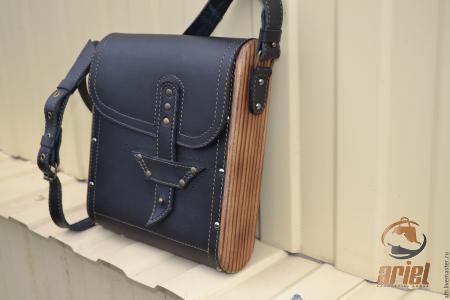 On the other hand, the allure of real leather shoes lies in their timeless appeal, craftsmanship, and heritage. Leather has been used for centuries in the production of footwear, garments, and accessories, symbolizing luxury, durability, and prestige. For many consumers, the tactile experience of wearing real leather shoes evokes a sense of tradition and authenticity that cannot be replicated by synthetic materials. The distinct look, feel, and smell of genuine leather add a touch of sophistication and elegance to any outfit, elevating the overall aesthetic and lending a sense of refinement to the wearer. In terms of performance and quality, real leather shoes have a reputation for durability, comfort, and longevity that sets them apart from faux leather shoes. High-quality leather is known for its ability to withstand wear and tear, maintain its shape and structure over time, and develop a unique patina that adds character and charm to the shoes. Genuine leather shoes can be resoled, reconditioned, and restored with proper care, extending their lifespan and ensuring that they remain a cherished wardrobe staple for years to come. Ultimately, the choice between faux leather and real leather shoes is a personal decision that reflects individual preferences, values, and priorities. Whether you prioritize sustainability, ethics, style, or performance, it’s important to weigh the pros and cons of each material and consider how they align with your lifestyle and fashion sensibilities. When shopping for shoes, take the time to explore a variety of options, try on different styles, and consider how each pair makes you look and feel. Whether you choose faux leather for its affordability and eco-friendliness or opt for real leather for its luxury and durability, make sure that your shoes reflect your unique personality and values. In conclusion, the debate between faux leather and real leather shoes highlights the diverse array of factors that influence consumer choices in the fashion industry. As you navigate the world of shoe shopping, remember to consider the environmental impact, ethical considerations, style preferences, and performance characteristics of each material to make an informed decision that aligns with your values and beliefs. Whether you walk in faux leather or real leather shoes, what matters most is that you step out with confidence, knowing that your footwear choice reflects who you are and what you stand for in today’s ever-evolving fashion landscape.
On the other hand, the allure of real leather shoes lies in their timeless appeal, craftsmanship, and heritage. Leather has been used for centuries in the production of footwear, garments, and accessories, symbolizing luxury, durability, and prestige. For many consumers, the tactile experience of wearing real leather shoes evokes a sense of tradition and authenticity that cannot be replicated by synthetic materials. The distinct look, feel, and smell of genuine leather add a touch of sophistication and elegance to any outfit, elevating the overall aesthetic and lending a sense of refinement to the wearer. In terms of performance and quality, real leather shoes have a reputation for durability, comfort, and longevity that sets them apart from faux leather shoes. High-quality leather is known for its ability to withstand wear and tear, maintain its shape and structure over time, and develop a unique patina that adds character and charm to the shoes. Genuine leather shoes can be resoled, reconditioned, and restored with proper care, extending their lifespan and ensuring that they remain a cherished wardrobe staple for years to come. Ultimately, the choice between faux leather and real leather shoes is a personal decision that reflects individual preferences, values, and priorities. Whether you prioritize sustainability, ethics, style, or performance, it’s important to weigh the pros and cons of each material and consider how they align with your lifestyle and fashion sensibilities. When shopping for shoes, take the time to explore a variety of options, try on different styles, and consider how each pair makes you look and feel. Whether you choose faux leather for its affordability and eco-friendliness or opt for real leather for its luxury and durability, make sure that your shoes reflect your unique personality and values. In conclusion, the debate between faux leather and real leather shoes highlights the diverse array of factors that influence consumer choices in the fashion industry. As you navigate the world of shoe shopping, remember to consider the environmental impact, ethical considerations, style preferences, and performance characteristics of each material to make an informed decision that aligns with your values and beliefs. Whether you walk in faux leather or real leather shoes, what matters most is that you step out with confidence, knowing that your footwear choice reflects who you are and what you stand for in today’s ever-evolving fashion landscape.
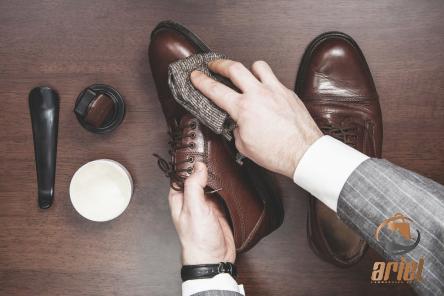




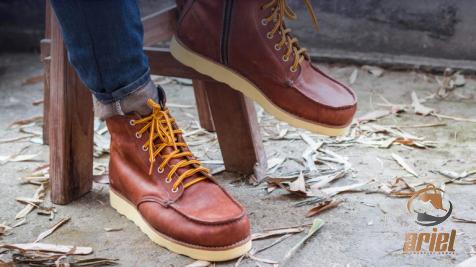


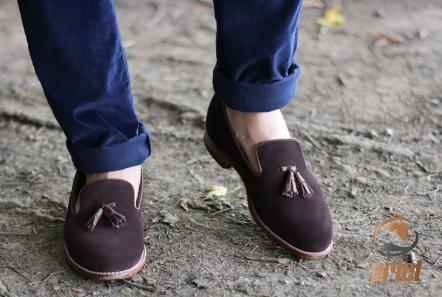

Your comment submitted.